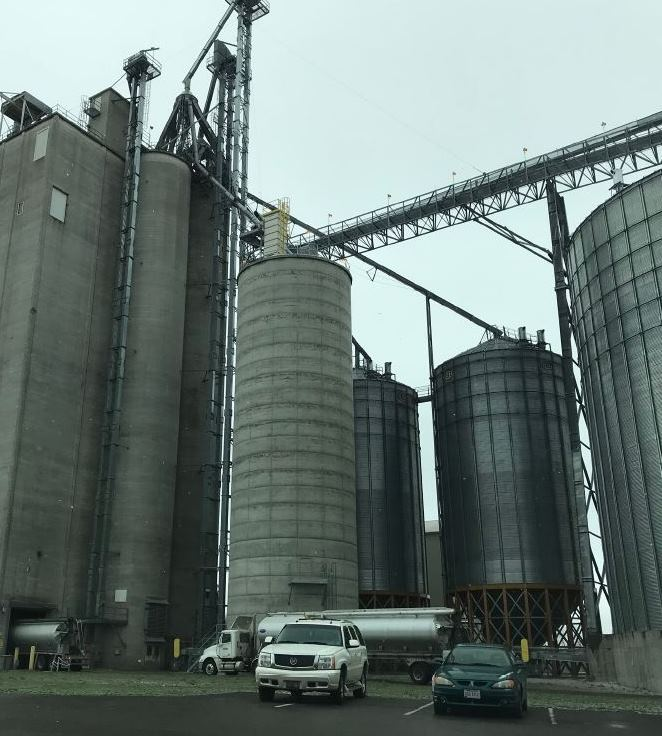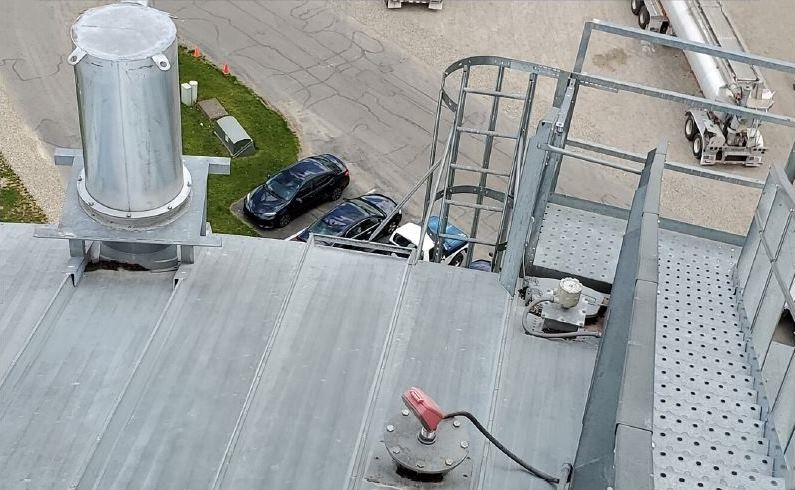A poultry feed mill based in the Midwest United States, stores various grains, additives, and supplements in both solid and liquid form. These bins, containing materials like liquified fat and lime that piles unevenly, can be challenging to measure.

This poultry producer has a strong corporate safety culture making an automated inventory system a great fit. BinMaster level sensors eliminate the need to climb bins to check levels, which make the workplace safer for the mill's employees. Image Credit: BinMaster
The site works with bins in a wide range of sizes and shapes. Some of the bins in use have cone bottoms. Many are steel, but a large slip concrete structure houses bins containing a number of different materials. The process and environmental conditions found in the feed mill are typical; a large, spread out facility and materials that are prone to dust.
BinMaster distributor Wm. Neundorfer & Company was able to rise to the challenge of making this mill’s inventory processes more efficient. Neundorfer’s relationship with this feed mill began even before the mill was built, over ten years ago.
Tom Hartman, of Wm. Neundorfer has been working with the mill from the start. The project began with dropping off a folder full of BinMaster brochures, even before construction had commenced.

Image Credit: BinMaster
Bob to the Rescue!
The system’s early stages included the installation of over fifty SmartBob continuous level sensors. These SmartBob weight-and-cable style sensors employ a “digestible bottle” as a weight – in effect, a plastic container full of an edible wax.
The sensors are considered digestible, because, if the bob disconnects from the cable, it will pass through and be digested by augers, with no damage to equipment or contamination of feedstuffs.
The majority of the SmartBobs are fitted on top of silos located inside a large concrete structure. These level sensors are lined up and programmed to obtain measurements every few hours, with on-demand measurements taken when required.
Saving on Wiring
Neundorfer adapted a highly creative approach to the integration of BinMaster technology. Because the mill was so spread out, the team employed almost every possible configuration to help display measurement data where the mill’s staff needed it.
Here, WL-19 D wireless radios helped reduce the need for wiring, while most of the SmartBob level sensors were daisy-chained and monitored via a single PC in the mill’s office.
Easy Data Access
Production staff access inventory from Binventory® (eBob v. 5.10) software using either a computer in the office or via a C-100 display console that offers easy access at ground level. A key benefit of both the software and the console is that users can take an immediate measurement as bins are loaded and unloaded.

About five years ago, the mill added 3D Level Scanners to several of the bins where a higher level of inventory accuracy was needed in feedstuffs that piled unevenly in silos. Image Credit: BinMaster

Image Credit: BinMaster
Long Term Commitment
BinMaster was the first and only inventory system that the mill had employed, and both Wm. Neundorfer and BinMaster are committed to maintaining this exclusivity. We make it a point to check in with our customers and let them know about the latest advances that Bin Master has to offer. For example, the 3D Level Scanner technology helped the mill make more informed production and ordering decisions.
Tom Hartman, Wm. Neundorfer
Acknowledgments
Produced from materials originally authored by Wm. Neundorfer & Co.

This information has been sourced, reviewed and adapted from materials provided by BinMaster.
For more information on this source, please visit BinMaster.